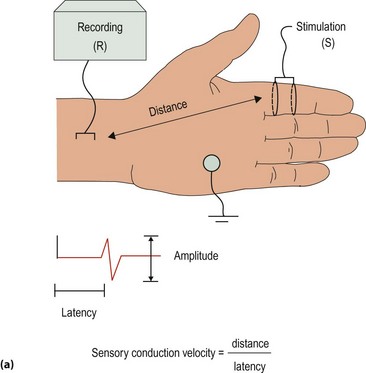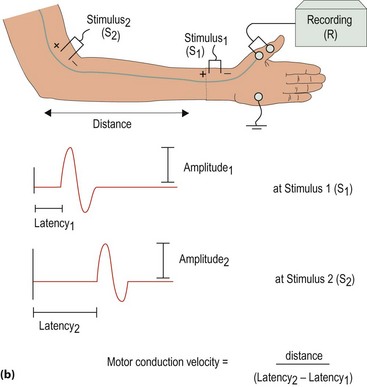Nerve conduction studies and electromyography
Nerve conduction studies
Sensory studies
Sensory nerves are studied by stimulating the nerve at one point along it, for example the index finger, and recording at a distant site along the nerve, for example the median aspect of the wrist (Fig. 1a). By recording the time difference for the action potential to appear at two sites along the nerve and measuring the distance between them, the mean conduction velocity can be calculated across the segment of nerve between the two recording points. The amplitude of the action potential can be recorded from the oscilloscope screen. Sensory nerves can be studied orthodromically (distal to proximal) or antidromically (proximal to distal).
Motor studies
Motor studies involve stimulating the motor nerve at distal and proximal sites and recording the muscle action potentials (Fig. 1b). The amplitude of the muscle response (compound muscle action potential, CMAP) to supramaximal nerve stimulation can be measured. The time from the distal site of stimulation to the onset of the CMAP is the terminal or distal motor latency. This measure includes components of nerve conduction, neuromuscular transmission and muscle activation times. The difference in time to CMAP between the two sites of stimulation and the distance between is used to measure conduction velocity.
Interpretation of nerve conduction studies
There are two types of abnormality detected by nerve conduction studies:
 Focal: where a single nerve is affected, e.g. the median nerve at the wrist in carpal tunnel syndrome.
Focal: where a single nerve is affected, e.g. the median nerve at the wrist in carpal tunnel syndrome.




